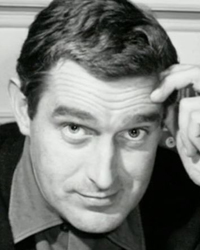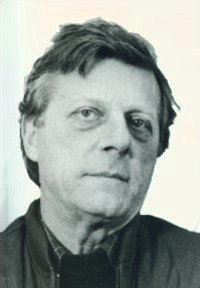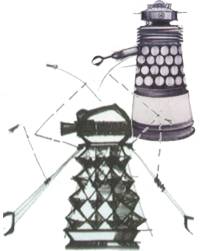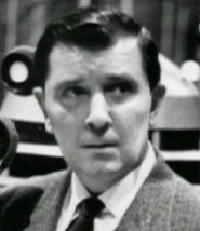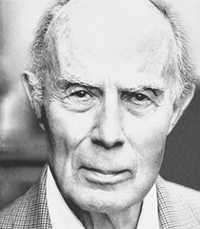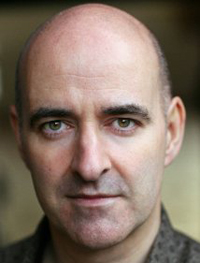of the Daleks
of the Daleks
of the Daleks
of the Daleks
of the Daleks
of the Daleks
Four weeks into Doctor Who, and the Doctor together with companions Ian, Barbara and granddaughter Susan leave prehistoric Earth and arrive on an alien planet, inhabited by two civilizations - the Thals and the Daleks. Ratings for the new series rocketed during the first Dalek adventure, and their reappearance always sparked a boost to viewing figures for the programme.
At the end of episode one of this first Dalek adventure, the viewers were left with the tantalising image of a Dalek "sucker" arm menacing a screaming Barbara Wright. What kind of creature could this be? From this first glimpse, the Daleks have left such an impression on the British psyche that the word DALEK has permeated into the Oxford English Dictionary – a fact that rather pleased their creator.
The man who came up with the concept of "Daleks", Terry Nation, was primarily known for having written routines for stand up comedians (including some of the best of his contemporaries such as Spike Milligan and Frankie Howard) as well as producing sketches for comedy shows such as Hancock's Half Hour. Asked to write a six part story for the first season of Doctor Who, Nation felt vaguely insulted at being asked to write for a children’s show. A dispute with Tony Hancock led to him accepting the job, however. The script for his first story, provisionally titled "The Survivors" and featuring villains called the Daleks was written in a week – a fact that stands in the face of its enormous impact on the viewing public.
Representing the controlling elements of society and the threat of extreme right-wing politics, the villains of the script were to be the kind who would destroy you purely because they wanted to. Nation wanted the villains of his plot to appear as anything but the "Man in a costume" that had been the standard alien villain up until that point both on television and in film. In the script for the first Dalek story, the creatures are first described as:
"… hideous, machine-like creatures. They are legless, moving on a round base. They have no human features. A lens on a flexible shaft acts as an eye, arms with mechanical grips for hands."
-- Terry Nation, Script for The Mutants (aka: The Daleks)
Sydney Newman, the Head of Serials and Drama at the BBC and the man responsible for creating Doctor Who was furious when he saw the scripts for the second serial. He had explicitly stated that the series should not include what he termed "bug-eyed monsters" and to his mind, the Daleks were the epitome of this concept. Producer Verity Lambert talked him round by explaining that they were not BEMs as they had once been people whose brains had mutated and needed placing in metal casings for them to survive. As the first episode was broadcast, it was apparent that Lambert was correct in her decision. Newman was not averse to admitting his mistakes, either privately or publicly.
Unfortunately, Terry Nation passed away in March 1997. Rights to the Daleks were passed on to his estate which retains creative control over plot lines the Daleks can appear in. The estate's right to royalties and elements plot control is one of the reasons why so few Dalek stories have appeared in print over the years. The joint ownership of the rights to the creatures caused problems when the series was being revitalised. Initial discussions broke down due to the Nation Estate wanting an unacceptable level of control over the scripts that would feature them. Fortunately for the viewing public and the series creators, the disagreement was amicably resolved and the Daleks graced the screen once more.
The task of creating a design for the Dalek casing fell to BBC staff designer, Raymond Cusick. Inspired by Nation's description of the creatures encased in metal, gliding across the floor, Cusick began sketching – "talking with his pencil" as director Richard Martin described it. From an initial cylindrical design, Cusick realised that the operators would be inside the casing for long periods of time. It would therefore be preferable that they be seated for comfort. Plans were refined and all the next designs were started from the form of a seated human.
The final plans formed the image that has become iconic, jokingly referred to as "The Pepperpot of evil". This initial design remained unchanged for the most part over the fifty years that the Daleks have been around, with only cosmetic alterations made to the basic Dalek shell. The gun arm was a constant through the designs but originally, the second limb was to be a more hand-like object that could grasp, push, pull retract etc. Budgetry restrictions meant that the design would be simplified somewhat – into a plunger which could be afforded. A large magnet was inserted into the plunger so that the Daleks could carry objects either directly or on a metal tray.
Interestingly, in the movie re-make of The Daleks starring Peter Cushing, some of the Daleks had plunger arms and others had two-finger claws. Further, the novelisation of the story suggested that there were closets around the city which held limbs of different types that the Daleks could swap when needed. The episode itself brushed on this concept as one Dalek is seen wielding a cutting torch to open a locked door.
The bulbs on either side of the Dalek dome were a last minute addition during the rehearsal stage. It became apparent that it was difficult for the other actors; the director, the camera crew (and therefore the audience) could not determine which Dalek was speaking. Holes were drilled and the lights installed with a switch that the operators used to turn them on and off in synchronisation with the lines, being read on the otherside of the studio by the voice actors.
The look and design of the Dalek casing was of paramount importance to the success of the Daleks themselves. Though some may make fun of the design, even now the casing is instantly recognisable and has the same ability to stop people in their tracks. Of particular note is the fact that the relatively unmodified Daleks featured in the recent series revival still had the same effect as the original Dalek seen in 1963 on the younger audience. A number of variations have been seen over the years. For information about some of these, please refer to the Designs section of this web site. One of the elements that the BBC has full control over is the look of the Daleks, as they were designed by an employee.
A third important factor in the success of Nation’s creations was the voice of the creature. A great deal of thought went into this, from the director of the first story (Richard Martin), the voice actors themselves (Peter Hawkins and David Graham) and Brian Hodgeson from the BBC's Radiophonics Workshop. The director came up with the idea that the Dalek creatures were nearly insane with claustrophobia. This concept leant a manic quality to the voices which combined well with the stunted, almost one syllable at a time delivery that formed the basis of the Dalek voice. In addition, Peter Hawkins and David Graham were keen to ensure that each Dalek had its own personality and could be recognised from the tone of voice used.
The voices were recorded on old sport commentator style microphones which were filtered through a Ring Modulator which added the metallic quality to the voice. Additionally, the modulators removed the higher and lower end registers from the voices ensuring a penetrating mid-register sound emerged.
As with the look of the creatures, the voices are iconic. The audio adventures produced by Big Finish Productions used the same techniques to produce Dalek voices to great effect. Nicholas Briggs has proved a true master of the Dalek voice, producing several unique voices for each Dalek type in any story. Even in scenes where Daleks are talking only to each other, the individual characters could be easily discerned by the listener. The effectiveness of the audios proved that the Daleks could be treated as interesting characters in their own right, despite the fact that on television during the seventies and eighties they had been reduced to serving less interesting roles in a story. The voices of the Daleks in the revived Doctor Who series also remain true to this method and are voiced by Nicholas Briggs.
